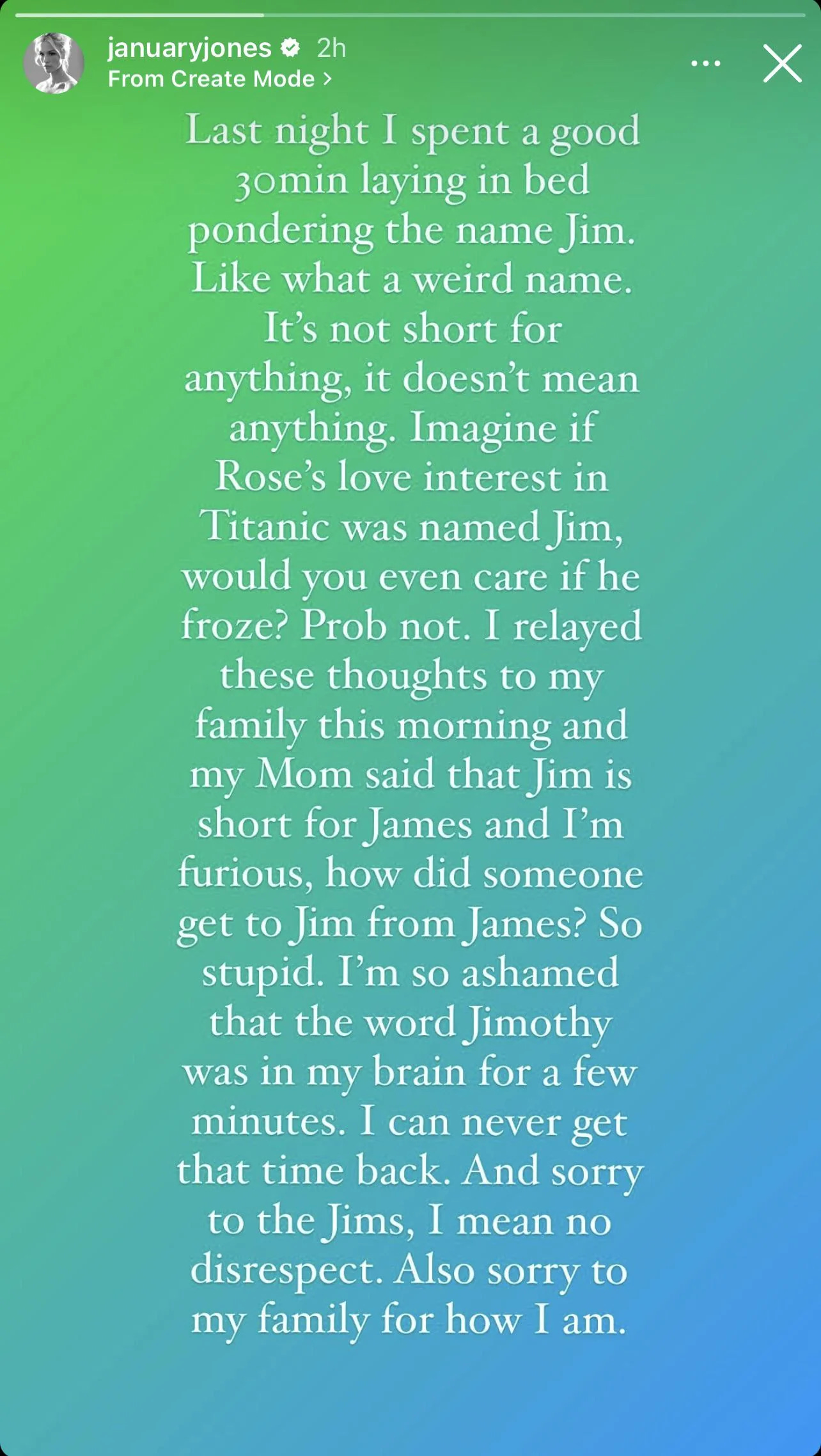Check out my first post here to read more about the namesake of this newsletter and make a copy of the input/output tracking sheet if you so desire.
I fully acknowledge that writing about Substack on Substack is tiresome, but I have a few things to say.
Putting aside the Nazi debate and the pure techbro nonsense of the Substack team’s response (the issue appears to have reached an uneasy detente for now) another thing that has been bothering me recently about Substack is the creeping sense of sameness when it comes to so many newsletter adopting the same “Best Practices.”
Substack is a newsletter platform, which means it’s a tool. I purposefully use that word because a tool is meant to be employed by the user in a way to help them achieve a goal. I believe that social media, if you’re using it for any professional gain, is also a tool. So then the first thing a writer should think about when deciding to create a Substack is: what will this tool help me to achieve? And not, as many classes, Substack posts, and SEO content on the internet would lead you to believe these days: how can I create a Substack that will pay for the time I put into it?
Why is there such a big push from the platform to go paid? I mean, obviously, because that’s the only way Substack makes money (until they introduce ads, at least, which I firmly believe we are less than a year out from. Once you take VC money the ads are not far behind). I don’t know if there’s currently firm proof that paid Substacks are ranked higher and pushed more than unpaid ones but you have to admit, that would make sense for the company, wouldn’t it?
Here are some of the proposed best practices I’ve seen floating around:
Publish multiple times a week, at least 2, ideally 3
Paywall at least one of those posts and send it out as a “Preview” to unpaid subscribers (let’s be real and call this what it is, an ad, these people are on your unpaid list and did not ask to be sent ads every week, usually multiple times a week)
Repurpose “proven” content from prior places you’ve published (aka reuse existing material to lower your mental lift)
Heavily engage in comment moderation and discussion (aka donate your time to growing the platform to make money for investors, we’ve seen this playbook before!!!)
Push paid subscriptions pretty much all the time
Participate in Notes, their little Twitter knock-off which is just people tagging other people’s Substacks repeatedly on another part of the platform.
Are these things bad? Not necessarily. And if you are reading this thinking I am shading you specifically, I am not. But again, thinking of Substack as a tool, ask yourself—is doing these things, essentially donating your time to grow A VC-funded platform, going to help you get what you what out of of writing a newsletter?
Some newsletter concepts and authors are very well suited to this sort of multiple-times-a-week, high-value publishing.
by Anne Helen Peterson is one, with interviews on an every-changing variety of topics, active, useful comment threads, and now even a podcast. by Sari Botton is another, with interviews, questionnaires, link round-ups, and a robust community with viewpoints I don’t see elsewere. I pay for both of these newsletters and find great value in them. In terms of information and advice in the writing field, I happily pay for ’s , which is continually stuffed with useful, actionable advice on writing and publishing. I also pay for single writer’s Substacks that have benefits such as playlists, book clubs, and other elements I find valuable.But if you’re a writer whose goal of being on Substack is to raise awareness of your work and build your newsletter list for your current and future projects, does going paid and following these best practices truly support what you are trying to do? Or have you given yourself another badly paid part-time job that sucks up mental and emotional energy?
If you follow all these best practices for the sake of following them, the end result is that your newsletter is going to start to start to look, sound, and operate much like many others. Especially if your topic is in the field of writing/creativity/productivity (and no shade, that’s the field this very newsletter is in!), which is extremely crowded.
I don’t want to get twenty carbon copies of newsletters every week, popping into my inbox at ideal times for engagement, with similar word counts, with SEO-focusd titles, responding to topics trending in the news.
I want to get newsletters that come in at completely random days and times, focusing on topics that the author clearly is battling intrusive thoughts about. I want to get a newsletter that’s a pure rant about Cinnamon Toast Crunch. I want to open an email and read something with energy, something with verve, something with the strong voice of the writer coming through. Something with the vibes of this very strange Instagram story the actress January Jones posted yesterday:
One of my favorite single newsletters I’ve ever gotten is this one by Max Read, where he spends several thousand words discussing his notes toward a theory of the Dad Thriller. I’ve referenced this post in coversations, bookmarked it, and steadily worked through all the movies on the list like I’m participating in a film school curriculum where every professor is a Boomer whose life was changed forever the first time they saw The Hunt for the Red October. I was delighted by this newsletter, and just reread it again and laughed again.
Compare that to many sorts of Substack missives I’ve been getting recently:
An entire email apologizing for missing a pre-stated publication schedule. This is the sort of admin email you send your boss when you miss a deadline at work. You do not need to send people ANOTHER email to say you are aware you are AN EMAIL behind. This email has no value.
Emails with rambling at the top prior to the paywall tease, the author clearly trying to reach a certain word count before they can paywall the actually good stuff. This is an ad. You are sending everyone on your unpaid email list an ad hoping to convert them to paid.
Guilty overcompensatory emails, where the writer clearly feels they have been, I don’t know, living their life offline too much, and now they must return with 2,000 value-laden words to ease their cognitive discomfort and prove their worth. These are too long, too intense, and they make me feel sad for the writer. Take some time off! I guarantee, very few people are actively tracking how often you are sending them an email and docking you points.
These are low-value missives, and they will make people unsubscribe from your list overall. The only reason people send them is to adhere to the Best Practices they’ve internalized and allowed to cause them emotional distress.
Unfortunately I don’t remember where I read this, but another writer had an interesting suggestion. Let’s stop calling them “Substacks” and just call them what they are—newsletters. They are tools to help a writer—whether they be a journalist, culture writer, comedy writer, productivity writer, whatever—achieve their goals in terms of building an audience interested in their work. Substack is a tech platform, despite their rheotic about being revolutionary for writers. They are following the same playbook as other tech platforms. You do not have to mortgage your time and energy trying to play their game and go paid when it simply may not suit you and the type of writing you put out.
I don’t mean this to be a shitty takedown of people with paid Substacks. I do very much believe that some writers and concepts are well-suited to these practices, and they are building thriving editorial kingdoms. My argument is simply that NOT EVERYONE should be chasing the high of Best Practices in hopes of making money off emails. If you want to send an email twice a month breaking down an episode of Alf, go for it! Have fun! Experiment! Looking back on my career, whenever I had a big opportunity or leap, it almost always came from something I was exploring, not following a Best Practice. You may not even know what the Best Practices are for your particular audience and topics right now.
The benefits of a newsletter, even one that’s unpaid, can be huge. Back when I sent a more narrowly focused Comedy and Satire newsletter on Mailchimp, I made contact with several people who ended up helping me in my career, including the person who introduced me to my current literary agent. I’ve gotten feedback on the topics and tone of writing that resonate with people, which is invaluable as you determine which projects to pursue next.
Repeat after me: you do not have to aspire to take your Substack paid. You do not have to aim for contant growth. You do not have to use Notes.
What you should do, if you’re going to exert time and energy on this platform, is ask questions like:
What is the goal of writing to an audience on this platform?
What experiments am I interested in trying?
Am I having any modicum of fun? Or is this another burden? Do I have something to say?
Am I gaining information that’s useful to me?
What are your thoughts on the great masturbatory Substack debate of 2024? Have you noticed a sense of sameness? Which newsletters and writers break out of that for you?
Interesting links!
NOTE: you must live in Washington, DC for this in-person job! The Kennedy Center is looking for a Programming Assistant Manager (Comedy & Institutional Programming). This is an early-career PRODUCTION job where you would make fantastic connections and gain amazing experience.
My writing group partner
has launched a newsletter called tracking the year leading up to the debut of her first novel, TELL THEM YOU LIED. Having read this book many times, I can tell you it’s excellent, and if you’re an aspiring novelist or anyone interested in the behind-the-scenes and glacial timeline of traditional publishing, I highly recommend subscribing.
Do me a favor—if you like these newsletters, hit the heart button! This helps more people in the Substack Network find it.
ABOUT ME: My name is Caitlin Kunkel and I’m a comedy writer, long-time teacher, and creator of The Second City’s Online Satire Writing Program. I currently teach classes and consult on gift book proposals, modern adaptation, satire, and comedic literature. I co-founded The Belladonna Comedy and the Satire and Humor Festival, and I co-wrote the satirical gift book New Erotica for Feminists: Satirical Fantasies of Love, Lust, and Equal Pay, named one of the Top 10 Comedy Books of 2018 by Vulture.




Personally I don't see any benefit to paywalling my content at all -- I *want* people to read it, and it makes no sense to create a barrier to entry. I have payments enabled, but am very clear that it gives people no extra content, just personal gratification from supporting me 😂 And I completely agree -- I'd much rather do my own thing in the way I want to do it than try to stick to any "best practices."
Thank you for the kind mention here, Caitlin! <3 And I agree with you on all of this. I also refer to my, ahem, publications, as "newsletters" and "magazines."